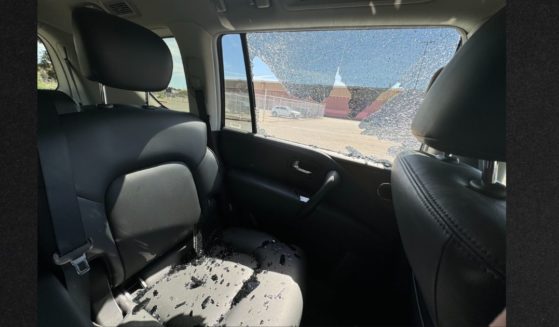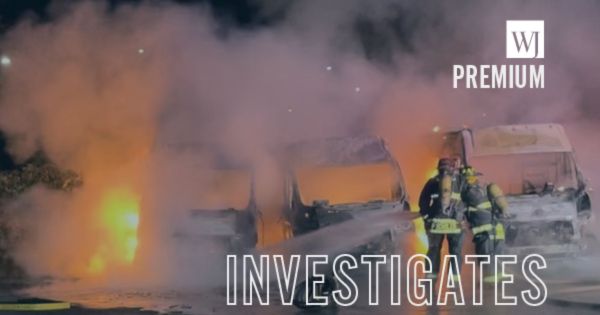
Firefighters Dish Damning Info on Electric Vehicles as Biden Buckles Down on His Green Agenda
When President Joe Biden signed Executive Order 14037 in August 2021, his goal was clear: Half of the cars sold in America will be “zero-emission vehicles” (electric, hybrid or fuel cell electric cars) by 2030.
Forgetting for a moment that 69 percent of Americans don’t want hybrids or EVs for their next car (per Axios), are Americans ready for such a rapid change? Are the nation’s fire departments?
According to many of the country’s top firefighters, the answer to that question is an unequivocal “no.”
But why is this the case?
For starters, firefighters have yet to reach a consensus on the best approach for fighting EV battery fires, which tend to be much more dangerous than a typical car fire.
One reason for this is the lack of experience most departments have with EVs. For example, Chief Daniel Murray, head of hazmat operations for the New York City Fire Department, said his department has yet to run into many EV fires, which he claims makes his department “very lucky.”
“We have not had any fires in New York City from the battery packs in electric vehicles … I think we’ve had a couple go on fire, but it wasn’t the batteries, and of course, those are just easy to extinguish. In the city of New York, we’ve been very lucky,” Murray told The Western Journal in an interview.
So, are EV battery fires uncommon? Maybe, but more on that question later in this report. Are they dangerous and difficult to extinguish? Most definitely, according to those firefighters interviewed by The Western Journal.
What’s more, according to them, as Biden-sponsored EVs become more common, a potential EV fire disaster scenario becomes increasingly inevitable.
The Incredible Danger of EV Fires
Few firefighters can speak on the dangers of EV fires with more authority than Lieutenant Phillip Scholes of the Orlando Fire Department.
Scholes once fought three electric bus battery fires in a single incident.
According to him, the complex internal workings of EV batteries make their malfunctions difficult to reverse.
“Pretty much everything that we have heard and seen and talked to other departments [about] was consistent with the incident that we had,” Scholes told The Western Journal.
“One of the biggest challenges with electric vehicles … is getting those vehicles cooled down and getting water to the source of the issue. And once … the separator breaks down inside the battery compartment, and those ions, cathodes and anodes — once they start crossing over and you get that thermal runaway, it’s really hard to stop it,” Scholes said.
According to the National Transportation Safety Board, thermal runaway happens when damaged battery cells rapidly increase in temperature and pressure, causing the battery to ignite.
“That’s one of the biggest challenges that we have. And even in that situation, we had three vehicles that were pretty much shoulder width away from each other — being able to apply water underneath them and to get them into the battery compartments was really one of the challenges. And that’s one of the overall challenges with electric vehicles in general,” Scholes said.
Scholes said it took 25 to 30 minutes to extinguish most of the fire.
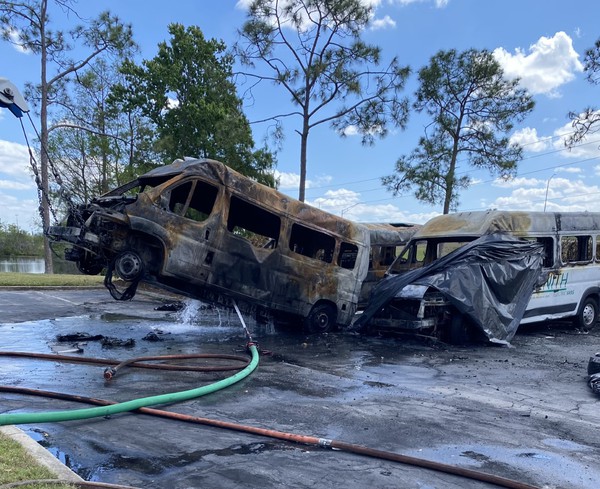
But Assistant Chief William Rhodes of OFD told The Western Journal that, despite the relatively fast knock-down of the surrounding blaze, firefighters were on-scene for two hours extinguishing the battery itself.
“Everything else was out by then, but that battery compartment was just on fire,” Rhodes said about the bus incident. “So it was kind of like a small fire in the middle of this thing that was just going to keep going and going and going.”
“When we were able to extinguish the surrounding material, the batteries are now in thermal runaway, and they’re just not going to go out.”
Ordinary car fires last a fraction of the time according to Rhodes.
This isn’t an uncommon problem with EV fires; it can take hours and thousands of gallons of water to put out an EV battery fire.
Does Water Help? Firefighters Disagree
Perhaps one of the biggest hurdles firefighters face with EV battery fires is the latter’s resistance to water.
“Part of the problem we have is, it takes a tremendous amount of water to cool a fire off and put it out. And in a lot of these car models — getting our water the ability to access where the fire is burning is very difficult because the battery packs are contained within a well-built box, if you will, underneath the chassis of the vehicle. So, that becomes our problem because we can’t get water onto the fire, and the fire itself — of any lithium-ion battery fire — is very difficult to extinguish,” Murray said.
While an EV fire can take thousands of gallons of water to extinguish, Murray said firefighters can put out an ordinary gas-powered car fire with only a couple of hundred gallons.
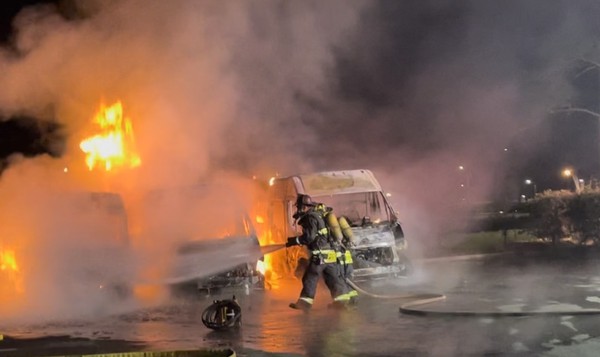
But Captain Gustin Williams of the Miami-Dade Fire Department voiced his skepticism about using water at all to put out an EV battery fire.
“There are fire services trying to figure this out as we go along,” Williams told The Western Journal.
“It takes thousands of gallons of water to sufficiently cool the battery case underneath an electric vehicle. It begs the question, are you really cooling anything? Having any effect? Or are you just allowing this thing to burn out? And if you didn’t apply the water, the outcome would be the same.”
Even among firefighting contemporaries, there is still a lack of consensus when it comes to how best to attack the growing danger of EV combustion.
The EV Fire Disaster Scenario Firefighters Fear the Most
Though many other departments have yet to fight many EV fires, most seem well aware of the uniquely catastrophic dangers they pose.
Captian Williams’ station has not fought many EV fires, though that hasn’t stopped him from fearing the dangers they pose.
“What happens when one of these vehicles — in an elevator, in a car-stacker, on a rack — goes through thermal runaway when it’s tightly connected to everything else?” Williams said.
Rhodes fears the same scenario. Relatively speaking, the bus fires were easy.
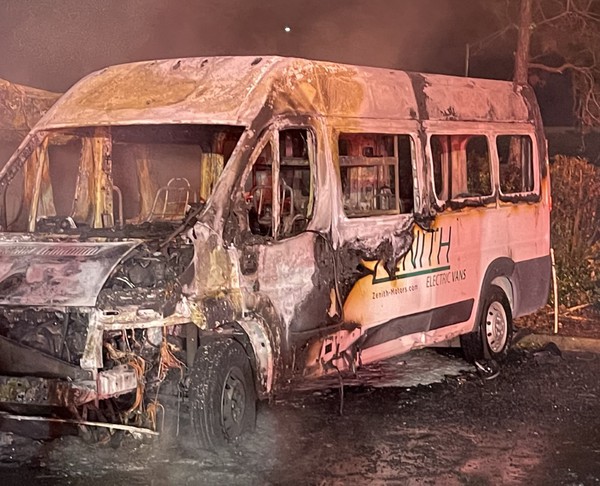
“While it took us four times longer than it would normally, it’s easy,” Rhodes said of the bus fires. “It’s in open air, in the back end of a parking lot, in the middle of the night, not interfering with anything. No smoke going across major roadways, no people trapped by the incident — they couldn’t leave or get out. Really, nothing that interfered with the fact that these three vehicles were on fire.
“So, now, put those three vehicles in a parking garage, and it’s a totally different circumstance.”
“That’s really what we’re looking at is the difficulty to extinguish these fires in areas other than a wide open parking lot with nothing around them to catch on fire. That’s when we’re going to start to run into problems,” Rhodes said.
If the Biden administration successfully transitions the country to electric vehicles, the possibility of such a scenario occurring seems increasingly inevitable.
Are EV Fires Rare?
But is there really a cause for concern if EV fires are rare? Whether or not that is actually the case is up for dispute.
The reality is there aren’t enough EVs on the road to make a definitive judgment on the frequence of EV fires. AutoInsuranceEZ conducted a 2023 study analyzing car fire data from the NTSB and sales data from the Bureau of Transportation Statistics.
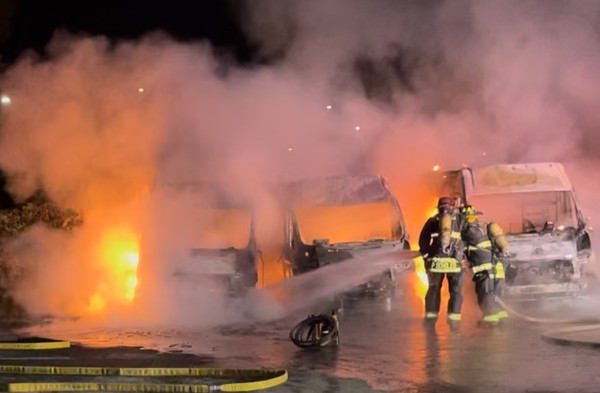
According to their findings, hybrid vehicles caught fire the most, followed by gas-powered cars and EVs. AutoInsuranceEZ’s findings revealed that out of 100,000 hybrid vehicle sales, 3,475 would catch fire. For gas-powered cars, it was 1,530. Lastly, just 25 EVs per 100,000 sales would catch fire.
But not so fast.
The study also made clear that gas-powered car fires are more common than electrical ones simply because there are more gas cars on the road. They also said the data does not indicate electric vehicles were less likely to catch fire.
According to Business Insider, new electric vehicle sales made up 5 percent of auto sales in 2022. S & P Global Mobility predicts that by 2030, that number will increase to 25 percent, meaning one in four new passenger cars sold will be EVs.
Battery fires may not be a common problem now. But that may be a different story when one in four Americans are driving them. The nation’s firefighters have yet to reach a consensus on how best to confront this problem. There is one thing they seem to agree on, however: EV fires are incredibly dangerous, much more so than their gas-powered vehicle fire counterparts.
Nevertheless, Biden’s message remains the same: Ready or not, Americans will switch to EVs.
In the meantime, fire departments will do what they can to prepare.
“For the fire service … this is where we’ve gotta, kind of make a transition in the way we do this. We like to fix things, and we like to put fires out. And this is one of those things that we just can’t do traditionally the way that we’re used to,” Rhodes said.
Hopefully, a Biden-approved influx of EV vehicles won’t overwhelm the nation’s firefighters before they figure out how best to face this daunting dilemma.
Truth and Accuracy
We are committed to truth and accuracy in all of our journalism. Read our editorial standards.







